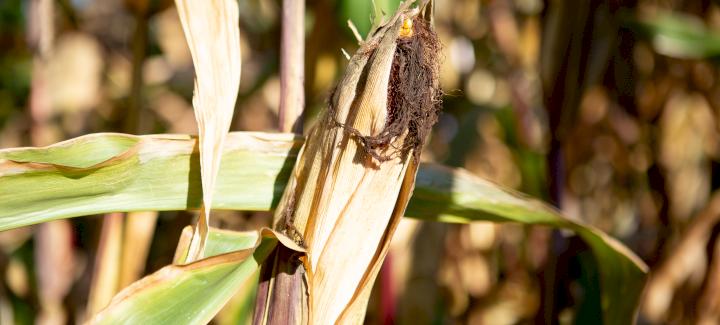
As 92% of the nation’s corn crop has entered the dough stage (R4), growers should be able to make yield estimates of their crop. Meaghan Anderson, field agronomist and extension field specialist at Iowa State University Extension and Outreach says, “After R3 (milk stage) is a great time to venture into corn fields to make yield estimates as kernel abortion is less likely and plant stress will result in reduce[d] kernel size or fill rather than kernel loss.” Corn yield estimations can typically be done after R3 and prior to harvest.
Here’s what you need to know to get started.
The standard calculation
The standard yield calculation is CornYield = Ears/Acre * Kernel rows/Ear * Kernels/Row and divide the equivalent of the three by Kernels/Bushel. In an average year, it’s safe to assume there are 90,000 kernels/bushel. However, that number can (and should) be adjusted based on stress levels of any given year and planting population.
”If you have 34,000 harvestable ears, an average of 32 kernels per row and an average of 16 rows, then divide that by 90,000 kernels/bushel,” explains Todd Schomburg, director of agronomy at Stine®. “Your yield estimate is 193.4 bushels/acre.”
Simplified, that’s 34,000 x 16 x 32 = 17,408,000/90,000 = 193.4 bushels/acre.
At Stine, we follow this industry standard for estimating corn yields, but we also have the Stine Yield Estimator that aids growers in calculating yield more precisely.
“The Stine Yield Estimator uses three variable kernels/bushel numbers,” says Schomburg. “80,000 for excellent growing conditions or heavy kernel grain; 90,000 for average growing conditions; and 100,000 for poor growing conditions or light kernel grain. If you want to use our Stine Yield Estimator on your corn fields this year, reach out to your local Stine independent sales rep or regional sales agronomist.”
TIPS FOR SAMPLING
“The formula for calculating yield has a typical margin of error of +/- 20 bushels per acre,” says Schomburg. “That said, it’s important to follow the rules of field sampling if you want an accurate estimate. Sampling recommendations vary by industry expert, but we follow the same ones each year.”
These tips include:
- Test at a minimum of five different areas of the field. These need to be in the field and not from the outside rows.
- Within those five areas, measure 1/1000th of an acre and calculate the number of plants within that section that have harvestable ears. (See this chart for how measurements vary by row width).
- In that section, select six to 10 harvestable ears at random. Anderson recommends choosing every fifth harvestable ear. Another industry expert suggests pulling the fifth, eighth and 11th ears from plants in one row of the sampling area. Remember the more ears you collect, the more accurate the sample; however, there must be some variability in how you select the ears.
- For each ear, count the number of kernel rows around the ear, and the approximate number of harvestable kernels on the length of each ear. This is an important step to calculate yield in the formula mentioned above. Do not include aborted kernels or tipped-back areas of the ear.
Remember, CornYield = Ears/Acre * Kernel rows/Ear * Kernels/Row and divided by Kernels/Bushel. If you need support calculating yields in your Stine corn fields this year, consult one of our sales reps or a local extension expert.



